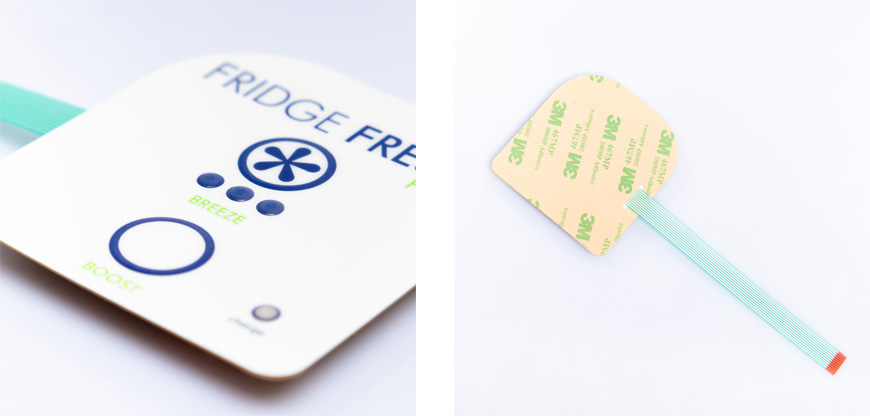
In today's fast-paced world, technology is constantly evolving, and user interfaces play a pivotal role in our daily lives. One of the unsung heroes of these interfaces is the membrane switch, a technology that remains relatively unknown to the average consumer. In this article, we will delve into the world of membrane switches, their functionality, and the fascinating science behind the sound they produce, or rather, the lack thereof.

To comprehend the essence of membrane switches, we first need to understand what they are. Membrane switches are thin, flexible, and durable electronic interfaces that have become an integral part of numerous devices, from microwave ovens to medical equipment and industrial machinery.
A typical membrane switch consists of several layers:
Graphic Overlay: The top layer, featuring printed graphics and icons.
Spacer Layer: A layer that separates the top and bottom circuits.
Circuit Layer: Contains the conductive traces that register user input.
Rear Adhesive Layer: Attaches the switch to the device's surface.
The Whisper of Membrane Switches
One of the most intriguing aspects of membrane switches is their silence. Unlike traditional mechanical keyboards, which produce audible click sounds, membrane switches are practically noiseless. But why?
The Science Behind Silence
The secret lies in the switch's construction. When you press a key on a membrane switch, the layers make contact, completing an electrical circuit. However, instead of relying on physical contact, as in mechanical switches, membrane switches use pressure-sensitive technology. This means that there are no physical components colliding with each other, resulting in a lack of sound.
Durability and Reliability
Membrane switches are known for their durability. With no moving parts to wear out, they can withstand millions of actuations without failing. This makes them an excellent choice for applications where reliability is paramount.
Customizability
Graphic overlays on membrane switches are highly customizable. This allows manufacturers to create unique and user-friendly interfaces tailored to their specific products.
Resistance to Environmental Factors
Membrane switches are resistant to moisture, chemicals, and dust, making them ideal for use in harsh environments where other switches might fail.
Consumer Electronics
Membrane switches are commonly found in everyday devices like remote controls, microwave ovens, and air conditioners, providing a sleek and responsive user experience.
Medical Devices
In the medical field, membrane switches are used in equipment such as patient monitors and infusion pumps due to their reliability and ease of cleaning.
Industrial Control Panels
Industrial settings demand rugged interfaces, and membrane switches excel in this regard, offering dependable control panels for heavy machinery and equipment.
As technology continues to advance, membrane switches are expected to evolve as well. We can anticipate thinner profiles, improved tactile feedback, and enhanced customizability in the coming years.
Membrane switches may not grab the headlines, but their silent operation and versatility make them a vital component of modern interfaces. From your TV remote to the control panels in factories, these unassuming devices silently facilitate countless interactions every day.